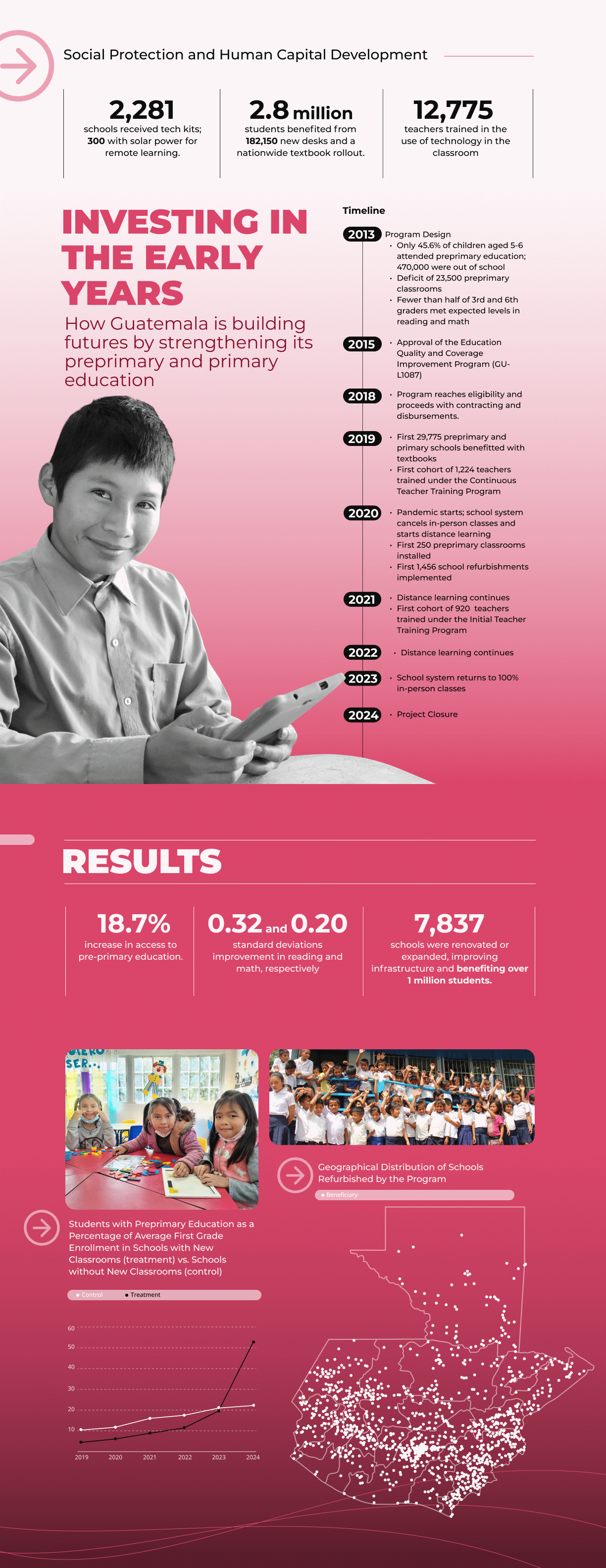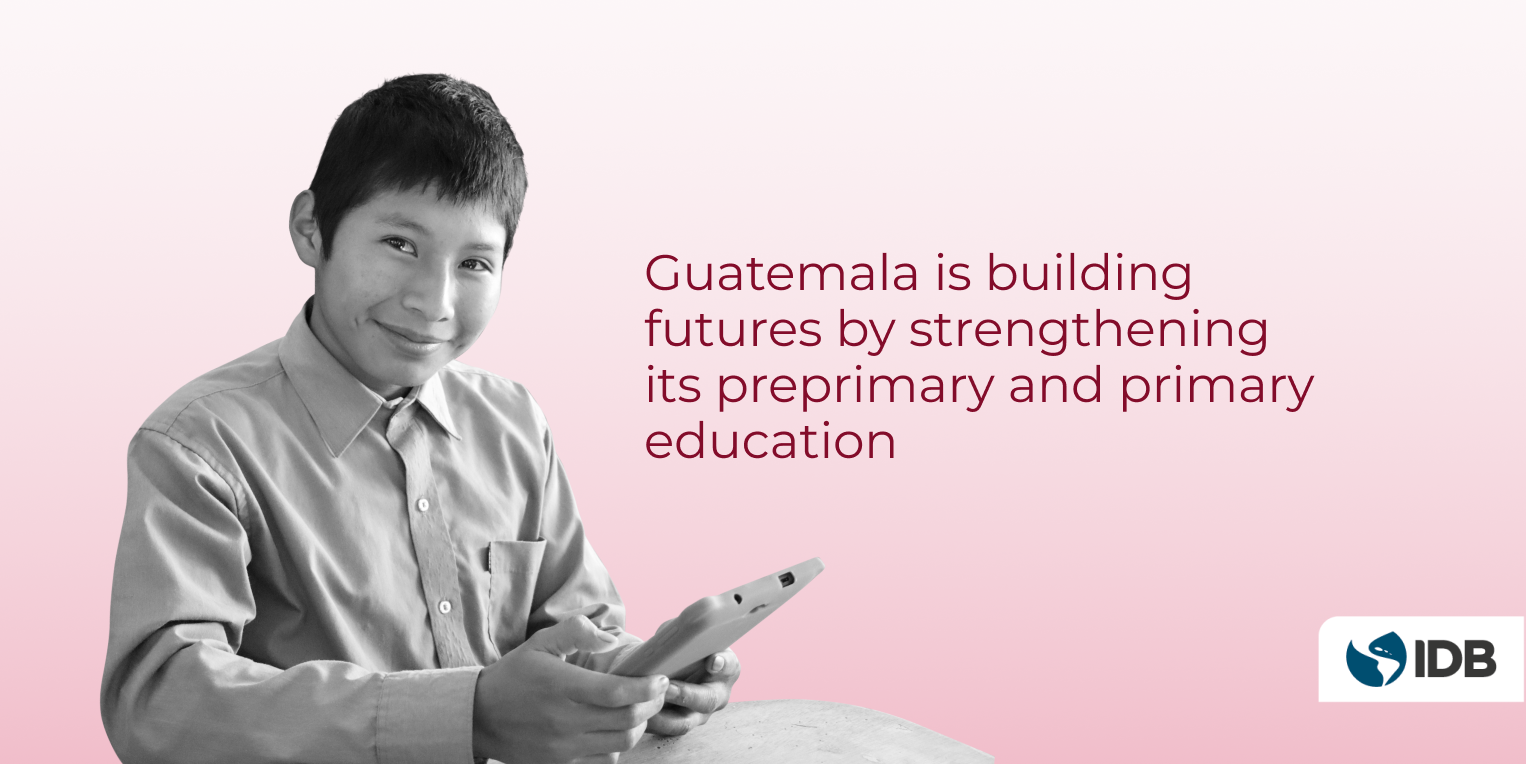In 2014, Guatemala’s education system faced important challenges. While school coverage had expanded in recent years, only 45.6 percent of 5- and 6-year-olds were enrolled in pre-primary school, underscoring the need to improve access. At the same time, as this study shows, the country faced a shortfall of an estimated 23,500 classrooms, and many existing facilities required upgrades to ensure safe, supportive learning environments. Learning outcomes also revealed systemic gaps: fewer than half of third-grade students reached satisfactory levels in reading (46.6 percent) and mathematics (45.8 percent), with similar results in sixth grade.
In response, the IDB Education Quality and Coverage Improvement Program (GU-L1087) aimed to expand pre-primary access and improve the quality of both pre-primary and primary education by building on the foundations of the My School is Making Progress initiative in underserved areas (GU-L1023). It was complemented by efforts from Kreditanstalt für Wiederaufbau (KfW) and the World Bank in secondary education and benefited from a technical cooperation (GU-T1252) that informed its design and implementation through insights on school transitions, learning assessments, and infrastructure management.
The program financed 775 modular classrooms with age-appropriate furniture and funded minor repairs in over 8,000 schools through one-time grants to parent organizations. To enhance quality, it trained approximately 9,000 educators in partnership with the Universidad de San Carlos de Guatemala and provided materials, including textbooks and portable technology kits. These kits contained tablets with preloaded content, servers for offline use, and visual equipment to support interactive learning. For remote areas, 300 photovoltaic systems enabled digital learning in off-grid schools. The program prioritized bilingual and intercultural education in underserved communities, aligning with national strategies.
The program expanded pre-primary access to nearly 21,000 children via new classrooms, improved learning environments for over 1.1 million students, and distributed textbooks to all public pre-primary and primary schools, benefiting nearly 2.83 million students. Technology kits reached over 300,000 students in 2,281 schools and 12,775 teachers were trained in the use of technology in the classroom. The final evaluation shows a 0.2 standard deviation improvement in math, while reading outcomes improved by 0.32 standard deviations among those taught by program-trained teachers[1] (García 2024). These results demonstrate how targeted investments in infrastructure, training, and materials can drive measurable improvements in access and learning outcomes.
Preliminary program findings highlight key lessons that can inform future education operations. Aligning infrastructure deployment with teacher recruitment ensures that classrooms are functional from the outset, maximizing impact. Embedding structured, context-sensitive teacher training and ongoing support enhances the use of educational technology, translating investments into learning gains. These insights from Guatemala offer scalable strategies for improving education outcomes in similar contexts.
For more information, see the project pages for GU-L1087, GU-L1023 and GU-T1252, and the Project Completion Report for GU-L1023.

[1] García, Vicente. 2024. “Evaluación final del Programa Mejoramiento de la Cobertura y Calidad Educativa de Guatemala.” BID. Guatemala.


Leave a Reply